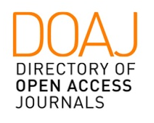The Archimedean Revolution of Nicolaus Copernicus
DOI:
https://doi.org/10.24117/2526-2270.2022.i14.09Keywords:
Copernicus, Commentariolus, On the Revolutions of the Celestial Spheres, Scientific RevolutionAbstract
The year 2023 marks the 550th anniversary of the birth of the Polish scholar Nicolaus Copernicus. Usually deemed one of the most emblematic examples of the scientific revolution and the theory of paradigm shift in the history of science, the heliocentric theory proposed by Copernicus in 1543 has fed the minds of philosophers and historians for centuries. Recently, increasing attention has been put on the recognition of the sources that might have influenced Copernicus’s creativity. The outcomes showed that the claims on paradigm shift are pretty shaky, because Copernicus was deliberately in dialogue with Ancient Greek and Arabic authors, and his On the Revolutions of the Celestial Spheres deliberately emulates Ptolemy’s Almagest. In this sense, the essence of the scientific revolution is more an attempt to recreate the debate with ancient authors then a breaking with their paradigms. This study takes a closer examination of Copernicus’s early draft on heliocentrism, the Commentariolus (1510-1515 ca.) and it argues that the birth of the heliocentric theory was first conceived as an attempt to write an Archimedes-like treatise, while the efforts to emulate Ptolemy come at a later stage. On this account, the early Copernicus can be considered an Archimedean.
Downloads
Published
Issue
Section
License
Copyright (c) 2023 Alberto Bardi

This work is licensed under a Creative Commons Attribution 4.0 International License.











